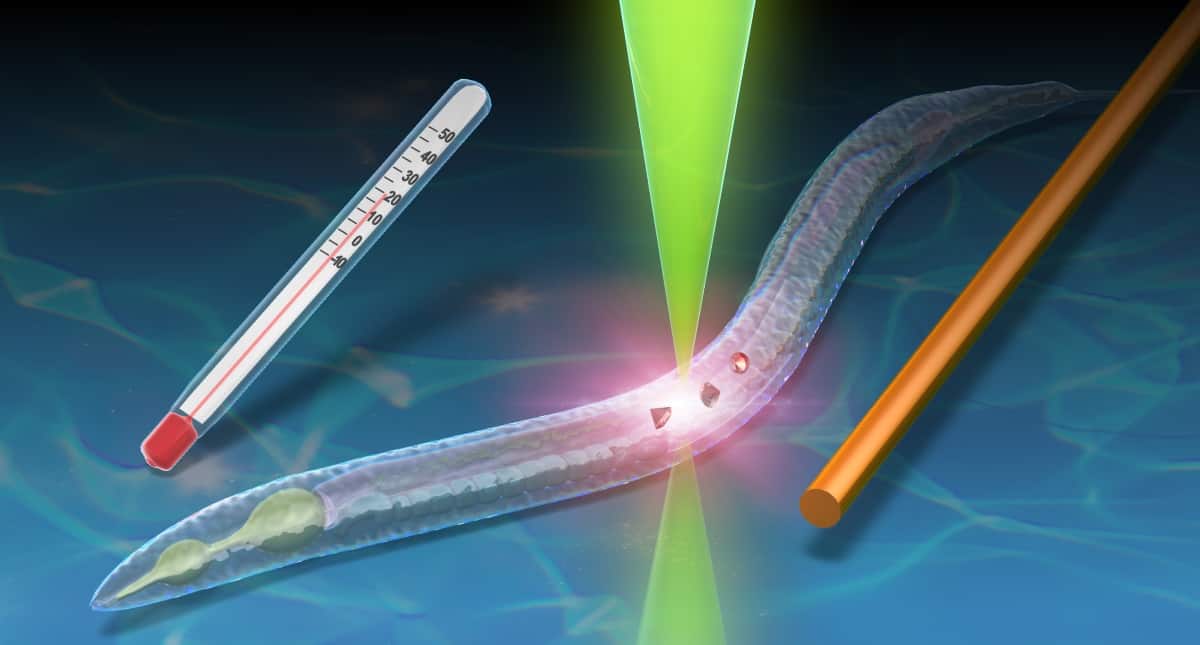 Nature, Ben Miller of University College London and his colleagues found that if they replaced the gold nanoparticles with spin-enhanced nanodiamonds they could make the tests many thousand times more sensitive.
Nature, Ben Miller of University College London and his colleagues found that if they replaced the gold nanoparticles with spin-enhanced nanodiamonds they could make the tests many thousand times more sensitive.
These nanodiamonds have a very precise imperfection in their crystal lattice known as a nitrogen-vacancy centre. The energy structure of this point defect causes the nanodiamonds to fluoresce. And the intensity of this fluorescence can be modulated by using an electromagnetic field to manipulate the electron spin of the nitrogen-vacancy centre. This fluorescence, and the ability to manipulate it, makes these nanodiamonds attractive as potential biomarkers.
To investigate whether these nanodiamonds could work in lateral flow tests, Miller created two tests for detecting the vitamin biotin: one using gold nanoparticles as the visual tag and the other using fluorescent nanodiamonds. The researchers then tested the assays using increasing dilute solutions of biotin. They found that the nanodiamond tests were 100,000 more sensitive than those that used gold nanoparticles, and could detect concentrations as low as 0.5 molecules per microlitre, or 27 particles in a 55 µl sample.
The researchers also created a lateral flow test for detecting HIV RNA. They found that after a 10-minute amplification step, which creates multiple copies of the RNA, they were able to detect HIV RNA in a sample that contained just a single molecule.
Reading the nanodiamond test strips, however, was not as simple as just looking at them. To check the results, the researchers imaged the paper strips using a fluorescence microscope while using a microwave field to modulate the nanodiamonds’ fluorescence.
Although you could use laboratory equipment to measure lower levels of gold nanoparticles than are visible with the naked eye, Miller tells Physics World that fluorescent markers are more sensitive, as fluorescence is easier to detect at lower levels than the change in light absorption caused by the gold.

Nanodiamond quantum thermometer measures the temperature of worms
However, when researchers previously tried to use fluorescent markers in similar assays, they struggled due to the background fluorescence from the test strips. This is where the nanodiamonds come in. Miller explains that you can modulate their fluorescence at a specific frequency and then filter to detect fluorescence at that frequency, separating their signal from the background fluorescence.
“We need to do more work to make [our tests] more applicable to low resource settings,” Miller tells Physics World. He says that the team is currently developing a prototype hand-held, low-cost portable reader, based around a smartphone. This will hopefully replace the microscope, he explains, making the test more suitable for primary care settings.
